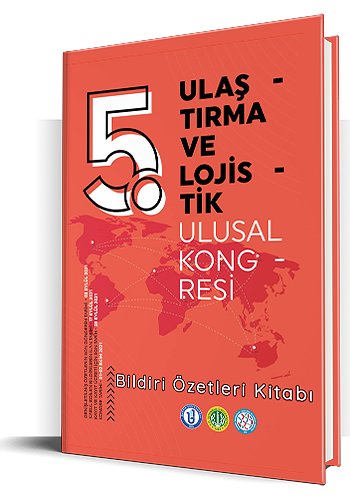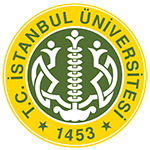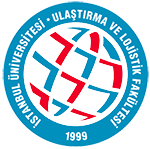
Ulaştırma ve Lojistik Kongreleri
- Türkçe
- Özet
- 2021
Akıllı Limanlar ve Dijital İkiz Uygulamaları
Songül Sarıalioğlu
Öğr. Gör., Bartın Üniversitesi, Bartın, Türkiye
Anahtar Kelimeler: Endüstri 4.0, Akıllı Liman, Dijital İkiz
Smart Ports and Digital Twin Applications
Ports are multidimensional systems where intensive shipping operations take place. In the maritime industry, ports play an important role in the economy and growth of a country. Today, it is very important to carry out fast and safe cargo operations in ports. Efficient use of resources, orientation to renewable energy sources and sustainability are the highlights in the development of port operations. With the concept of Industry 4.0 taking its place in the industry, businesses started to exhibit a competitive attitude in the field they operate by benefiting from the development of smart technologies such as artificial intelligence applications, cloud data management, sensor fusion, internet of things, and cyber-physical systems. The concept of Industry 4.0, which is synonymous with smart production, was used for the first time at the Hannover Fair in 2011. Today, Industry 4.0 applications include the digital transformation of all industrial and consumer markets, from the digitalization of smart production and distribution channels. The concept of ""Port 4.0"" has taken its place in the literature with the increase in the applications of the concept of Industry 4.0 in the port industry areas. The concept of Port 4.0 has enabled the development of smart ports and their involvement in the global supply chain. The changing demands of global trade come to the fore even more today, due to the growing need to be smart, the growth of ship volumes, the faster movement of cargo, and the challenges created by geopolitical issues. The concept of smart ports can be defined as ports where the information required for operation-operations is shared and transferred by using wireless network or private network connections for operations such as port operations (loading, unloading, anchoring, etc.), storage, maintenance-repair. In other words, smart ports are fully automatic ports where all devices are connected via an Internet of Things based system. Today, the Ports of Rotterdam, Antwerp, Hamburg, and Valencia are examples of ports that develop smart port applications. The technology used in all smart ports is not the same. The use of technological applications depends on different variables such as port infrastructure, cargo handling, safety, and security. Smart ports integrate different systems, integrating data from sources such as sensors, mobile devices, and databases of different port stakeholders. For example, the Port of Antwerp uses digital twin technology, which is defined as the conversion of physical data into digital data. Digital twins allow port emissions to be reduced, security processes to be improved, and maritime stakeholders to share data effectively. A digital twin is a real-time digital map that contains data about the positions of the ships and the docks they are connected to. At the same time, it regularly receives real-time data from cargo movements and vehicle traffic in a port facility and transfers this information to systems. The digital twin of the Port of Antwerp was created based on the Antwerp Port Information and Control Assistant (APICA). APICA provides real-time information on vessel movements, hazardous material flows, air quality and weather conditions, while detecting oil spills. APICA's brain consists of real-time data. It is aimed to create simulations that will predict certain situations, operations, and events by adding data from the past to the system. The Port of Antwerp digital twin technology includes cameras, sensors, and communication tools, enabling it to monitor what is happening in the port, including movements and events. As an open innovation platform, the Port of Antwerp is developing a network of drones to provide a safe port. It is the first port in the world to have an unmanned traffic management (UTM) system to ensure efficient and safe use of drones. Automated drones are used to survey the large port area for potential risks and provide real-time imagery in the event of an oil spill. The aim of the present study is to analyze the technological development of the Port of Antwerp and analyze the ways in which smart ports use innovation to turn today's great challenges such as energy transition, digitalization, and mobility into solutions. Cooperation and the application of new technologies ensure the sustainable growth of ports, making them more efficient, safe, and smart. Thus, it is aimed to increase the air quality, water quality, noise quality and energy efficiency in the environment where the ports operate. The document analysis method was used in the study. A compilation is presented with the data obtained. In the study carried out, definitions of smart ports, Industry 4.0, and digital twin concepts were made and a literature review on smart port applications and digital twin technologies was included. In the light of the information given, the applications, advantages and disadvantages of the smart port and digital twin activities of the Antwerp Port are emphasized. As a result, it has been determined that Antwerp Port aims to be a safer, safer, environmentally friendly and future port with APICA, which has been developed based on digital twin applications.
Keywords: Industry 4.0, Digital Twin, Smart Ports


Bu çalışma, kullanan kişilere orjinal çalışmadan alıntı yaptıkları sürece, çalışmayı dağıtma, değiştirme ve üzerine çalışma hakkı tanıyan Attribution 4.0 International (CC BY 4.0) lisansı ile lisanslanmıştır.
İletişim
İstanbul Üniversitesi Ulaştırma ve Lojistik Fakültesi
İ.Ü. Avcılar Kampüsü 34320 Avcılar/İstanbul
ulk@istanbul.edu.tr
+ 90 (212) 440 00 00 - 19200


